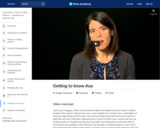
Get to know more about Ana.
- Subject:
- Applied Science
- Arts and Humanities
- Computer Science
- Graphic Arts
- Material Type:
- Lesson
- Provider:
- Khan Academy
- Provider Set:
- Pixar
- Author:
- Disney Pixar
- Khan Academy
- Date Added:
- 07/14/2021


Get to know more about Ana.
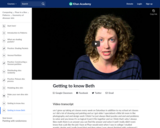
Get to know more about Beth.
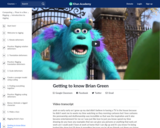
Find out what makes Brian tick.

Getting to know more about Dominic Glynn!
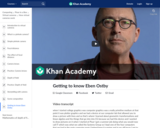
Get to know more about Eben Ostby.
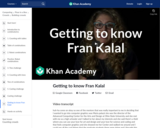
Let's get to know Fran Kalal.
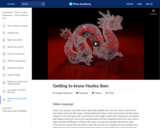
Find out more about Hayley.
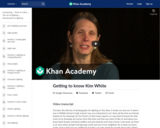
Getting to know Kim White.
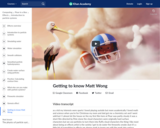
Get to know more about Matt Wong.
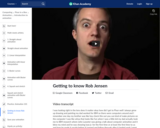
How did Rob start out?
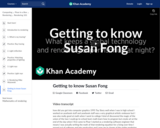
Find out more about Susan Fong!
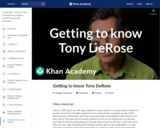
Learn about Tony DeRose.

The Girls Who Build: Make Your Own Wearables workshop for high school girls is an introduction to computer science, electrical and mechanical engineering through wearable technology. The workshop, developed by MIT Lincoln Laboratory, consists of two major hands-on projects in manufacturing and wearable electronics. These include 3D printing jewelry and laser cutting a purse, as well as programming LEDs to light up when walking. Participants learn the design process, 3D computer modeling, and machine shop tools, in addition to writing code and building a circuit.
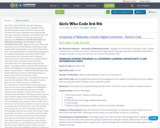
Girls Who Code 3rd-5th
By: Khristina Polivanov - University of Nebraska-Lincoln, Copyright 2018 by Khristina Polivanov under Creative Commons Non-Commercial License. Individuals and organizations may copy, reproduce, distribute, and perform this work and alter or remix this work for non-commercial purposes only
NEBRASKA HONORS PROGRAM CLC EXPANDED LEARNING OPPORTUNITY CLUBS INFORMATION SHEET:
Name of Club: Girls Who Code
Age/Grade Level: 3rd-5th
Number of Attendees: (ideal number) Between 5 and 10; no more than 15
Goal of the Club: (learning objectives/outcomes) Encourage girls to be confident in themselves and their abilities while teaching them basic concepts used in computer science.
Resources: (Information for club provided by) Girls Who Code curriculum, Scratch tutorials, individual research
Content Areas: (check all that apply)
☐ Arts (Visual, Music, Theater & Performance)
☐ Literacy
☒ STEM (Science, Technology, Engineering & Math)
☐ Social Studies
☐ Wellness (Physical Education, Health, Nutrition & Character Education)
Outputs or final products: (Does the club have a final product/project to showcase to community?) There are a few Scratch and Made With Code projects that the girls can save on their account or a USB drive.
Introducing your Club/Activities: At the beginning of each club, we have a tech spotlight which highlights a woman in tech and what she’s known for (usually someone from computer science). We also have an icebreaker question about something random to get the girls’ attention and get them involved before jumping right into the activity for the day.
General Directions: If you’re unfamiliar with computer science, make sure to research or try the tutorial activities on your own so you are prepared for club. From there, each club is pretty structured in that you do the icebreaker question, a tech spotlight, and then the activity.
Tips/Tricks: If a girl doesn’t like an activity on a certain day, ask them what they’d like to see more of in the club; let the students know that you care about their opinion and that you want them to have fun. If the girls are really rowdy or get way off track, try to get them back into the activity, and if they don’t listen you can be a little more stern with them. Each group is different though, so make sure you find a balance. If you want your students to be able to save their work, make sure they can either create a Scratch account or have a folder on their computers they can save their projects to.
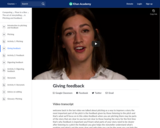
How to give constructive feedback.
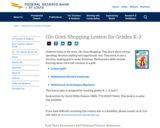
Students listen to the story, Glo Goes Shopping. They learn about saving, spending, decision making and opportunity cost. They learn to use a decision-making grid to make decisions. Mathematics skills include learning about rows and columns in a grid.

Global Finance for the Earth, Energy, and Materials Industry covers the physical and financial aspects of energy commodities with the focus on crude and natural gas. The physical \path\" of each commodity from the point of production to the point of use will be explained, as well as the \"value chain\" that exists for each. Commodity market pricing, both cash and financial, will be presented, encompassing industry \"postings\" for cash, commodity exchanges, and \"over-the-counter\" markets. The use of financial derivatives to reduce market price risk (\"hedging\") will be presented, and \"real world\" examples will be utilized. Students will learn and practice the trading strategies in the energy commodity financial markets."
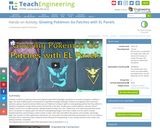
Students combine art, gaming culture and engineering by fabricating light-up patches to increase youngsters’ visibility at night. The open-ended project is presented as a hypothetical design challenge: Students are engineers who have been asked by a group of parents whose children go out Pokémon hunting at night to create glowing patches that they adhere to clothing or backpacks to help vehicle drivers see the kids in the dark. Student pairs create Pokémon character stencil designs cut from iron-on fabric patches, adding transparent layers for color. Placed over an EL (electroluminescent) panel that is connected to a battery pack, the stencils create glowing designs. Each team creates a circuit, which includes lengthening the EL panel wiring to make it easier to wear. Then they sew/adhere the patches onto hoodies, messenger bags, hats, pockets or other applications they dream up. The project concludes with team presentations as if to an audience of project clients. Keep the project simple by hand cutting and ironing/sewing, or use cutting machines, laser cutters and sewing machines, if available.
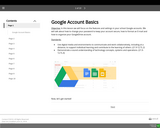
This lesson takes students through the importance of changing Google passwords, changing their Google passwords, formatting an e-mail and organizing their Google Drive.
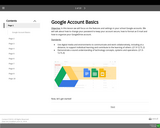
Basics of Google E-mail, Google Drive and sending a professional E-mail.